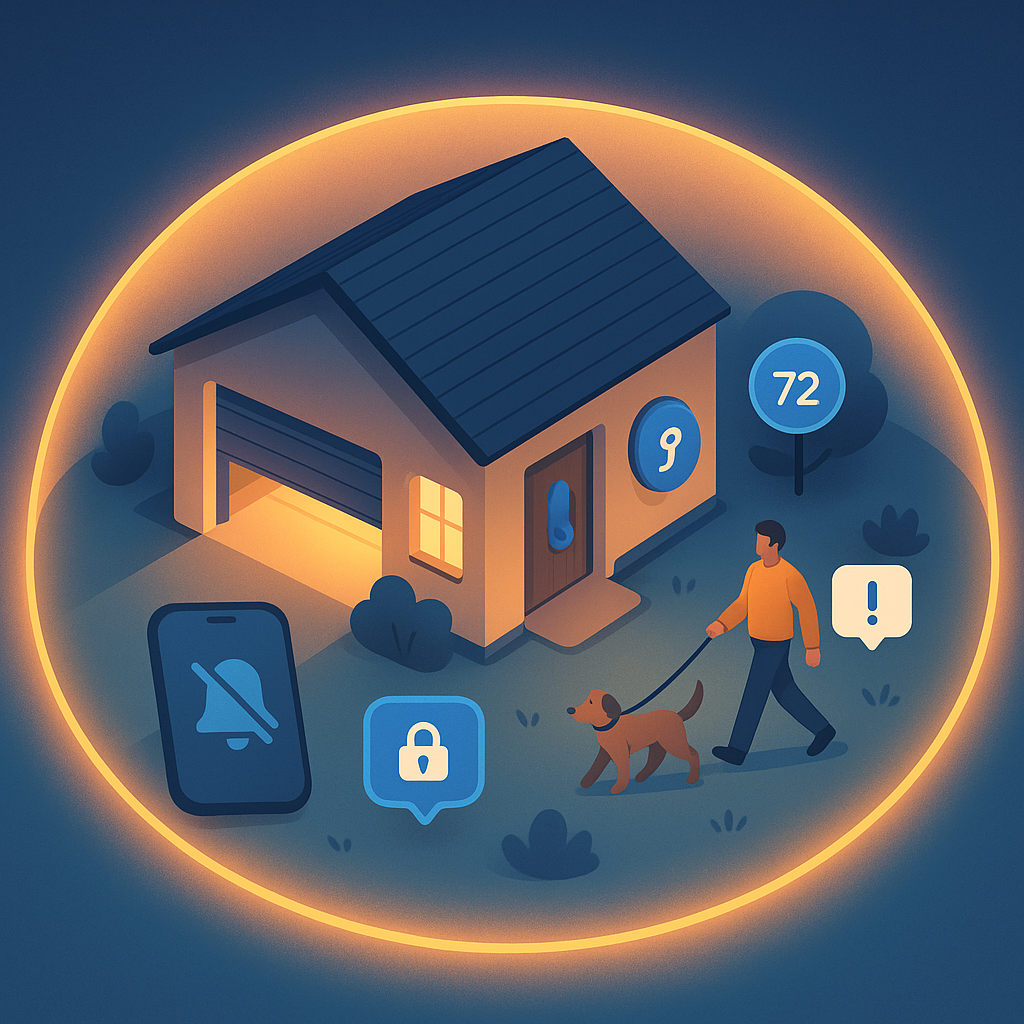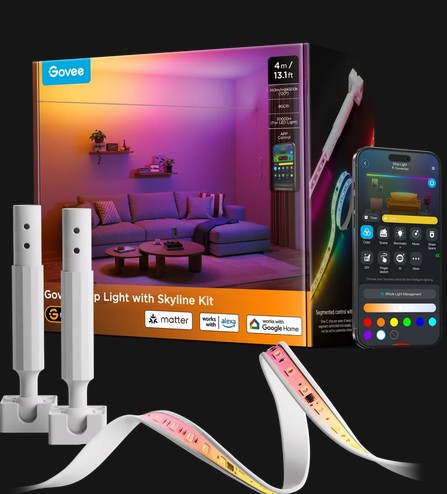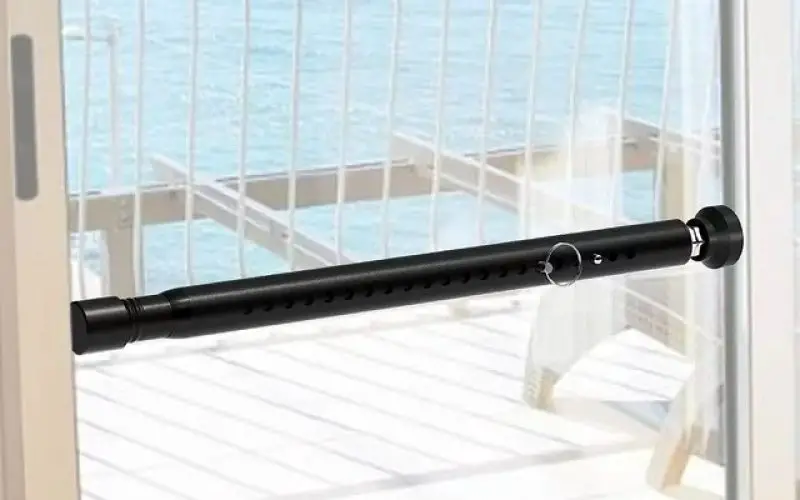There are many types of security bars and door jammers, but the one that probably comes to mind is a horizontal steel bar that fits across your door. These types of security bars have been around since ancient times in one form or another.
You may recall from films set in the medieval era when guards barricade the doors with bolts or beams. It seems such a simple and outdated tactic, yet it is still used today.
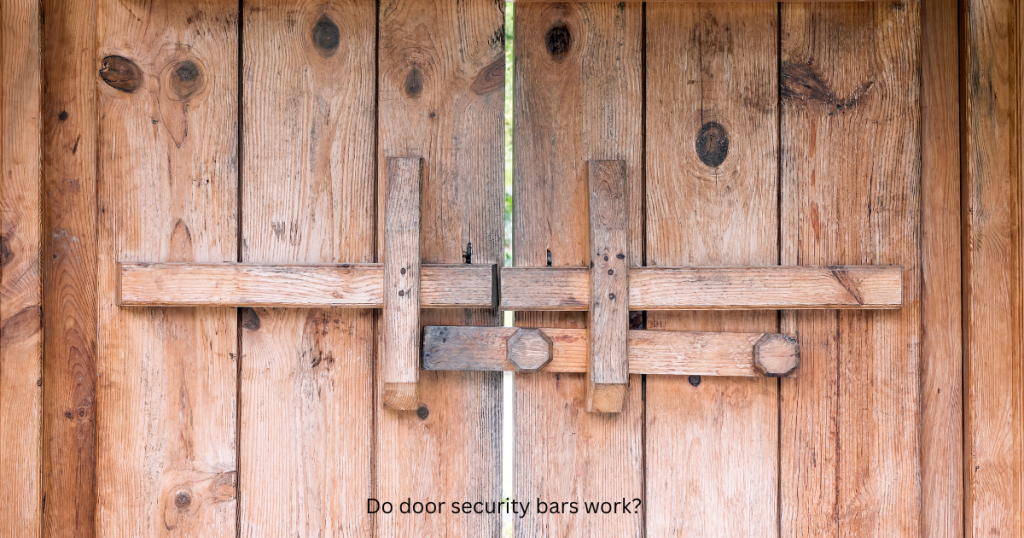
In essence, the security bar has not changed from its form in the medieval era. While they used huge timbers that slid into place or large beams that lowered into hooks, now we use metal rods that fix to the door frame..
The hardware is more lightweight and tuned to modern doors, but the concept remains the same.
Whether it was a thousand years ago or yesterday, people want to feel safe. We as a species are both very good at barricading entrances and finding ways into places we shouldn’t be. If you live in a rough neighborhood, haven’t had time to replace the old front door, live alone, or want to protect your family, it makes sense that you would take every precaution in securing your home.
Unfortunately, locks and deadbolts are not always enough. To prevent break-ins and promote peace of mind, many people invest in extra safety measures. Security bars are a popular option.
The question remains, however, do security bars work, and are they worth it? Here you can find answers to these questions and more. Let’s start by learning how security bars work in preventing intruders.
How Do Door Security Bars Work?
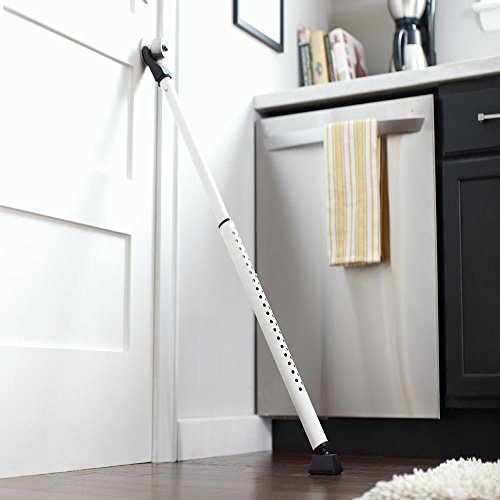
There are two main functions of a horizontal door bar; the first is to block the door, and the second is to distribute force away from the lock and towards the frame.
Most door bars have two major components: the bar and bar seats. The bar seats can vary depending on the design, but most of them are metal hooks or loops that the bar sits in. They affix to the inside or outside of the doorframe.
When the bar is in place, the bar seats hold it there. Some security bars have anti-lift locks to prevent the bar from being jimmied or lifted off the hooks from the other side. Most of the time, this is a non-issue as the force is almost always directed at the bar.
The bar is a physical barricade that prevents the door from opening.
Additionally, because the bar connects to the frame, a solid structure of the house, it cannot be broken down like a door held on by maybe three hinges and a deadbolt.
If the bar is in contact with the door, it prevents the door from moving and transfers the force from the lock to the frame.
Some door security lock bars look just like the medieval gate ones that sit in large hooks, while others slide across the door through loops. Others still are a little more complex and feature a gearbox that attaches to the door itself.
This type of door lock still uses the metal loops attached to the frame, but by turning a handle on the gearbox, two bars slide out from the center into the loops.
There are many designs of security bars. Some even have electronic alarms. However, the concept remains the same. The security bar transfers force away from flimsy locks towards solid walls and prevents the door from swinging inwards.
What Is the Purpose of Security Bars?
According to the FBI, residential burglaries happen every thirty seconds in the U.S. While that number may seem exceedingly high, remember, there are over 329.5 million people in the U.S.
That’s not to say that burglary isn’t a threat. Rural areas are more likely to be burgled, as are rented properties. Additionally, burglaries occur more often during the middle of the day when people are at work and in the summer.
The chances of a home invader who isn’t a robber are infinitesimally small. While the statistics don’t lie, they don’t always help with peace of mind.
Door security bars are a fantastic way to secure your easiest entry point and settle your tormented mind. While some neighborhoods and houses have higher chances of intruders, anyone can use a security bar if they want.
Deadbolts and door locks prevent people from opening doors, but not from breaking them. A simple key lock can be picked or forced with a strong kick. Deadbolts, while more secure, are only as strong as the door is. If the wood is old or the screw holes where the bolt secures are loose, deadbolts are easy to get past.
The deadbolt itself won’t break. They’re very strong, but the wood will splinter under enough pressure.
Homeowners, business owners, secure facilities, government offices, and banks all use security bars as an extra precaution against break-ins.
Since the dawn of doors, people have been barricading them against unwelcome guests. The reason we have security bars now is the same reason we did centuries ago.
Advantages and Disadvantages of Security Bars
While security bars may seem like a no-brainer preventative step, there are some unfortunate downsides. For starters, security bars are nothing special to look at. You probably don’t associate security devices and aesthetics or even expect them to look good, but this is a device that will be present in your house every day.
Every morning and every night, when you take down and put up the security bar, you will see it. While this doesn’t bother some people, it may pose a problem for others. If the bar is not in place, the hooks still are. These can also be a hazard for people who tend to fall or children.
Conversely, security bars are specially childproofed and may be a good option for anyone with sleepwalkers in their household.
One of the main problems with security bars is the danger they pose in the event of a fire. Security bars will slow down your exit and may be difficult to remove in the dark. They can all prevent emergency crews from entering should you ever need assistance.
It is a testament to how strong security bars are that even professionals will have difficulty getting through them. Most security bars can hold back a minimum of 350 pounds of force.
On top of that, security bars are usually inexpensive, well under $100. They are also relatively easy to install as the only step is attaching the hooks to the door frame. Regretfully, horizontal door security bars are not the easiest product to find.
If you can find one, though, it is well worth the price compared to a full security system. The people who need extra home security the most are usually the ones that can’t afford it. Thankfully security bars are fairly cheap and can even be made at home.
When Are Security Bars Needed?
Now that we’ve covered pretty much everything about security bars, the only thing remaining is to talk about where and when to use them.
As we’ve already covered, security bars are for preventing intruders. Robbers are the most likely to enter a house through the front door. Logic dictates then that the ideal spot for a security bar is the front door.
The surest way to prevent any type of forced entry is to barricade all doors that give access to the house. This includes the front door, back door, any side doors, and the garage door. If you have a sliding door or double door, you will need a different kind of security device.
Additionally, there are options for barricading or barring windows if you want to be extra cautious.
If you live in a rough neighborhood, rural area, apartment, rented property, or a place that could use some TLC, you should consider using security bars.
Robberies are more likely to take place in rural areas and rented properties. If you know the crime rate in your area is high, you may be at risk of break-ins.
Another thing to consider is your living situation. If you live alone, have kids, or are elderly or otherwise disabled, a security bar can help you greatly. Even if you never need it, just knowing there is an extra step between you and a potential intruder can ease day-to-day stresses.
Similar Security Devices
Security bars are wonderful, but they don’t work for all doors. They may also be out of the question if you live somewhere where you can’t drill into the door frame or modify the house. Fortunately, many similar types of devices can help you secure your home.
Sliding Door Bar
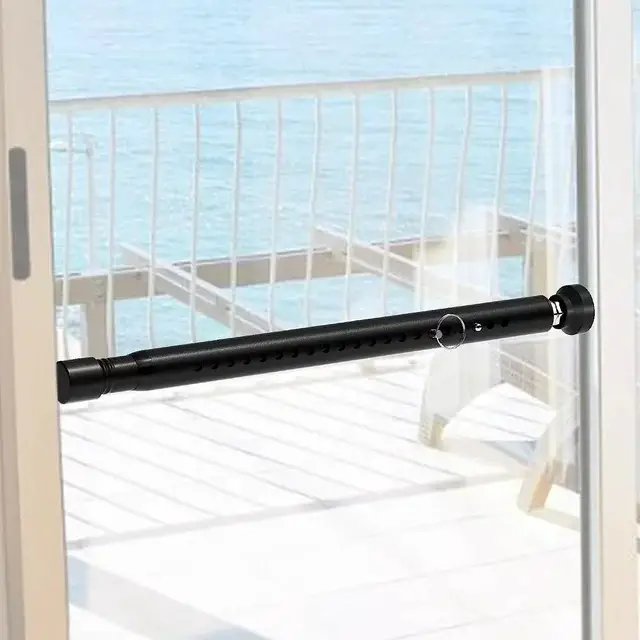
Regular security bars hold shut single doors that swing inwards, which means they are tragically ineffective for sliding doors.
Fortunately, there are sliding door security bars. This bar installs easily and can be removed with minimal signs that it was ever there.
The bar is hinged at one end. This side screws into the door frame on the side of the door that doesn’t open. The accompanying hook screws into the back end (the side opposite the handle) of the sliding door.
When the door is closed, the bar comes down to rest on the hook. Some sliding door bars have an anti-lift lock and childproofing. When the bar is in place, You cannot open the door. It works off the same concept as putting a broom handle or piece of wood to block the track.
While this bar won’t prevent anyone from smashing through the glass, it is an excellent way to guard against intruders. It is also relatively inconspicuous and doesn’t need to be set aside like a regular security bar when you are not using it.
Door Bar Jammer
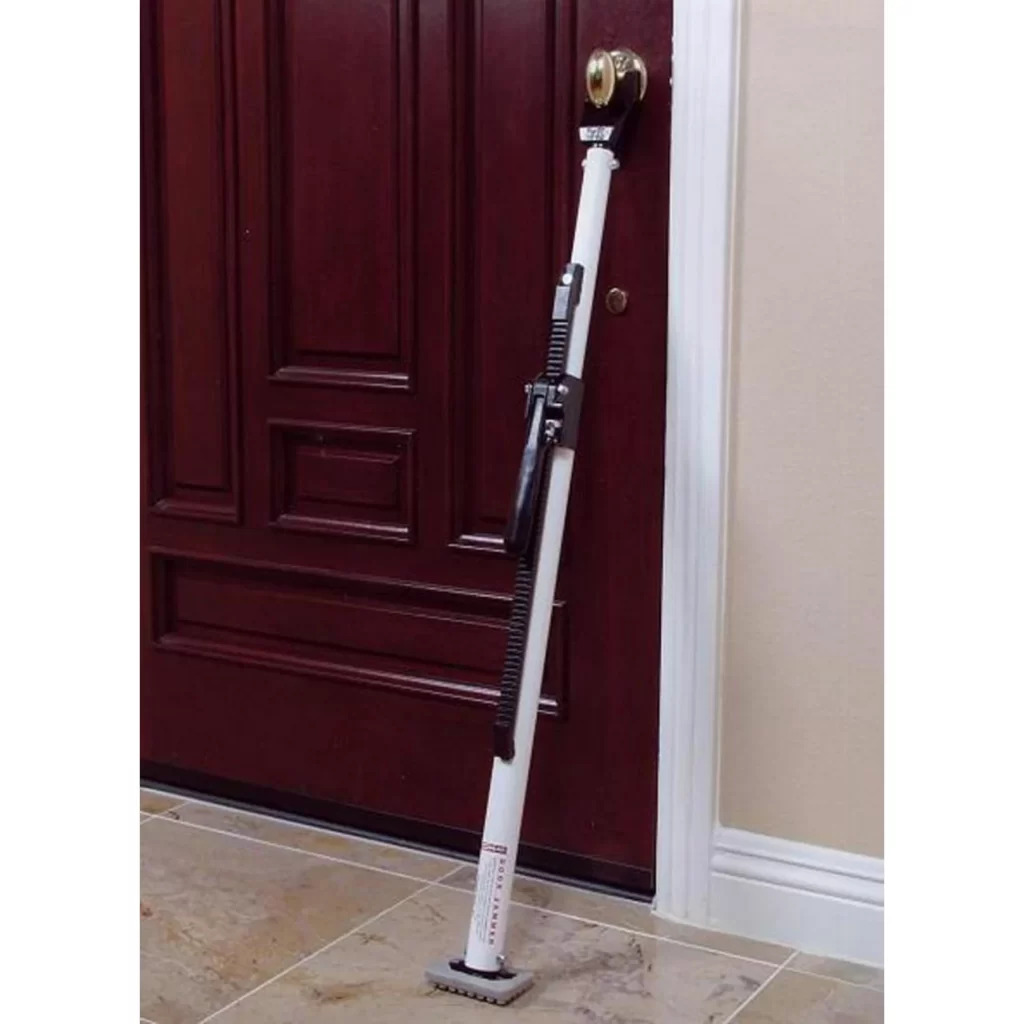
Another very popular security device is the door bar jammer. These devices look a bit like walking sticks and work the same way shoving a chair under the door handle does.
There are many brands of door bar jammers, but they all look about the same; there is a hook on the top end that fits under the door handle, a long adjustable pole, and some sort of anti-skid base.
The device sits at an angle from the door. It prevents it from opening by jamming itself tighter between the floor and door when pressure gets applied to the door.
There is no installation for this device, and you can use it on almost any door. There are even versions that work for sliding doors.
While this device is usually quite inexpensive, there are pricier models with built-in alarm systems. This device, though extremely strong, is also less reliable than a regular bar due to the adjustment pegs. Some models have been known to have the pegs fail, causing the entire device to fail, though it is a rare occurrence.
Another issue with the bar jammer is that it is not as effective on all flooring. Some work better on carpet, while others only work on hardwood.
Portable Lock Brace Jammer
While sticking a pole under your door handle is unsightly, the bright red portable lock brace jammer is an even less attractive option. This device is smaller overall than the bar jammer and fits under the door.
One side of the device is a hook that slips under the bottom of the door and comes up about five inches on the inside of the door. It connects to a rod that leads back to the floor and ends in a stopper.
The concept is the same as the bar jammer; when pressure gets applied to the door, the jammer is forced harder against the floor.
This device is easier to transport and more out of the way than the bar jammer, but it does have one major problem. If the door itself is weak, applying enough pressure to the top of the door may break it. As this device only sits on the floor and not in the middle of the door, it can only prevent forces lower down.
Like the bar jammer, it may be more or less effective, depending on your type of flooring.
Door Wedge with Alarm
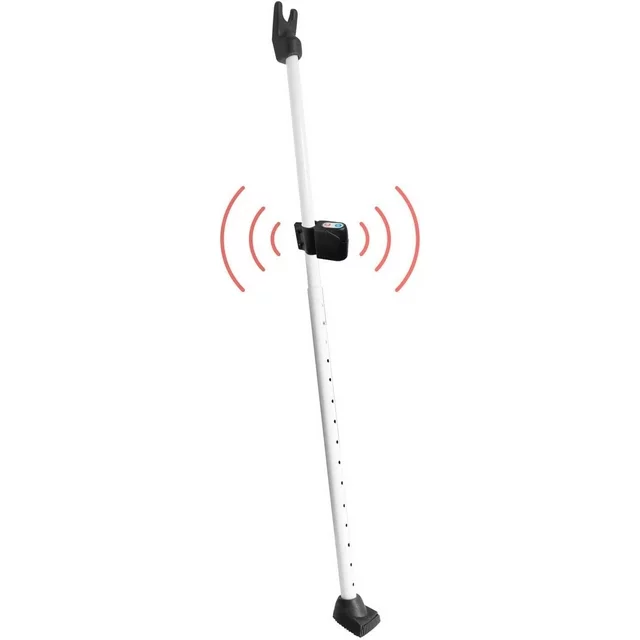
Just as the name implies, this security device looks just like a simple door stop. By merely sliding the wedge under the door, it is secure.
The emergency door stop is not as strong as other devices, but it does have a built-in alarm. Even if someone forces the door, the alarm will probably scare away any intruders.
The alarm works via a small pressure plate on the top of the wedge. If the door opens enough to press the button, the alarm will sound.
This device is also one of the cheapest security devices on the market. The only major problem is that it will not fit all doors. If there is no gap under the door or the gap is so large that the door can swing right over it, the alarm will not trigger. Using it on a deep, plush carpet may also prevent it from working correctly.
Portable Pocket Lock Door Jammer
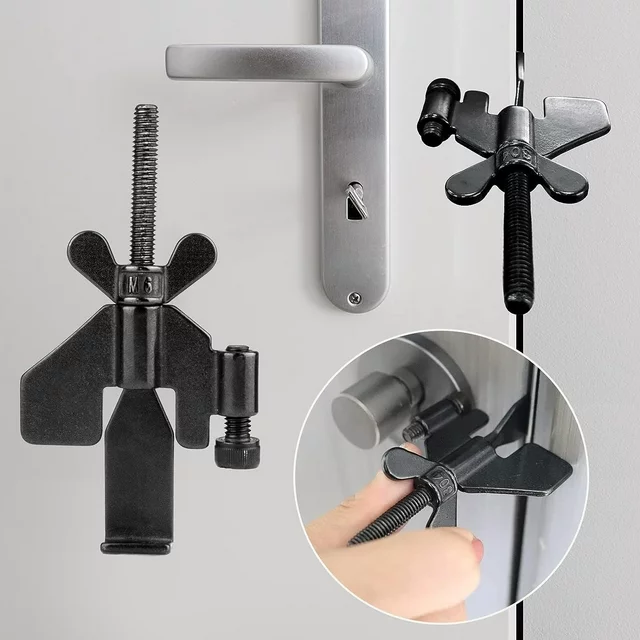
Lastly, the portable pocket door jammer is a great option for anyone who travels a lot or just wants a little extra security. This lock is excellent for apartment doors, hotels, guesthouses, and even friend’s houses that don’t have locks on the bedroom doors.
The jammer works quite simply. There is a metal plate and a plastic jammer connected by a chain. To use it, fit the metal plate into the door jamb where the handle or deadbolt goes in, then close the door. Next, fit the knob of the plastic plate into the hole on the metal one. The result will be that the plastic plate sits firmly against the door.
The installation is super easy and doesn’t damage the door at all. This is a great device for home or travel and can work on doors that don’t have locks. Some versions have a two-sided metal plate for different-sized door jambs.
The lock will not work on doors that close very tightly, double doors, or sliding doors.
Are Security Bars Worthwhile?
If you’ve made it this far, you’ll probably agree that door security bars work, and they are, indeed, worth it.
Whether you live in an apartment, detached home, townhouse, rented property, rural area, or rough neighborhood, investing in a door security bar is never a bad idea. If you cannot install a bar, there are plenty of other security devices to ensure your home is safe from intruders.
Do Door Security Bars Work, and Are They Worth It?
Yes, door security bars can work effectively to reinforce doors and enhance home security. They are designed to prevent forced entry by securing the door from being opened, even if the lock is compromised.
For people seeking an inexpensive, easy-to-install way to boost home security, door security bars can be worth the investment. They provide peace of mind and an extra layer of protection, especially for entry doors. However, for comprehensive security, they should be combined with other measures like reinforced locks, door cameras, and window security.
How Door Security Bars Work?
Physical Barrier: Door security bars act as an additional barrier that is placed across the door to prevent it from being forced open.
Bracing Against Force: Many of these bars are made of strong materials like steel, and they brace against either the floor or the door frame to absorb the force from someone trying to break in.
Versatile Use: Some models can be used on multiple door types, including sliding glass doors and regular hinged doors.
What are the advantages of door security bars?
Affordable Security Option: Compared to full security systems, door security bars are a budget-friendly option to add extra protection.
Easy to Install: Most door security bars require no professional installation and can be put in place quickly.
Portable: Many bars are adjustable and easy to move, making them great for renters or for people who travel frequently.
Additional Layer of Defense: They provide a second line of defense in case your locks are tampered with.
What are the downsides of door security bars?
Not a Complete Solution: While effective, they are a secondary security measure and work best when paired with good locks and other security features.
Limited to Forced Entry: Security bars mainly prevent forced entry and may not protect against other vulnerabilities like windows or weak door frames.




